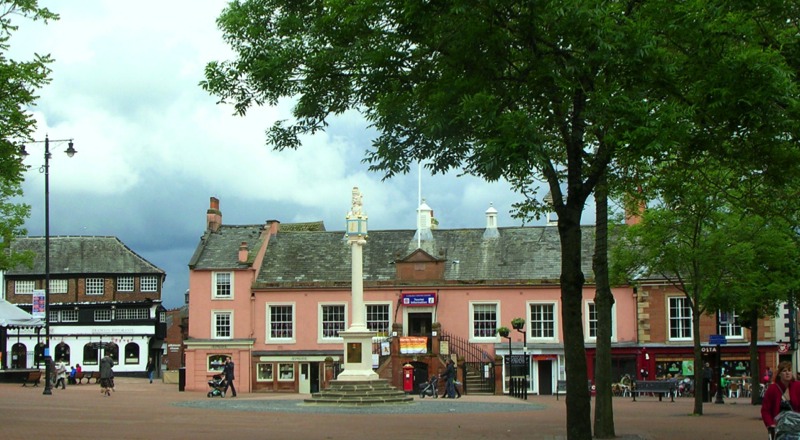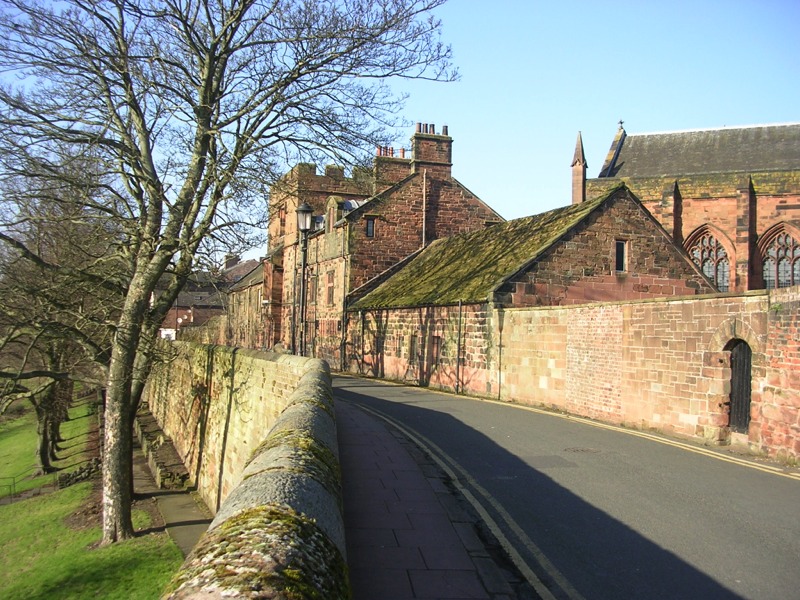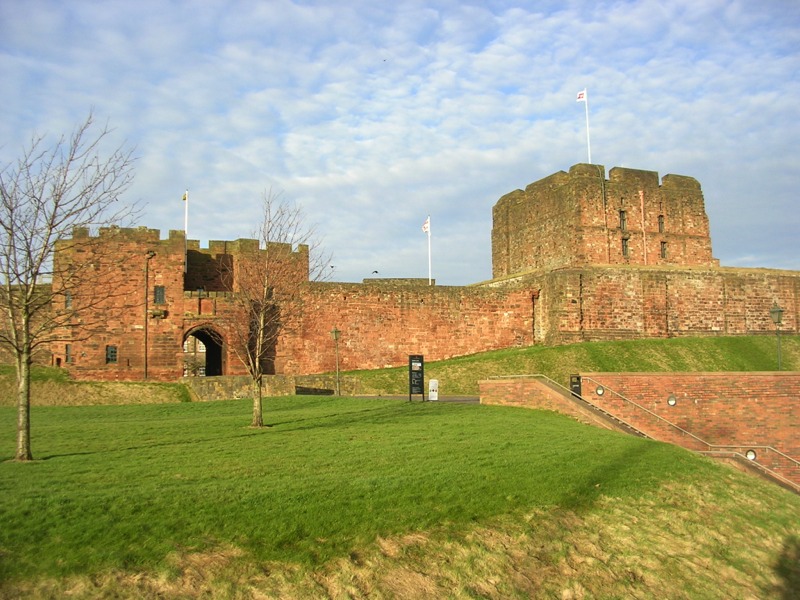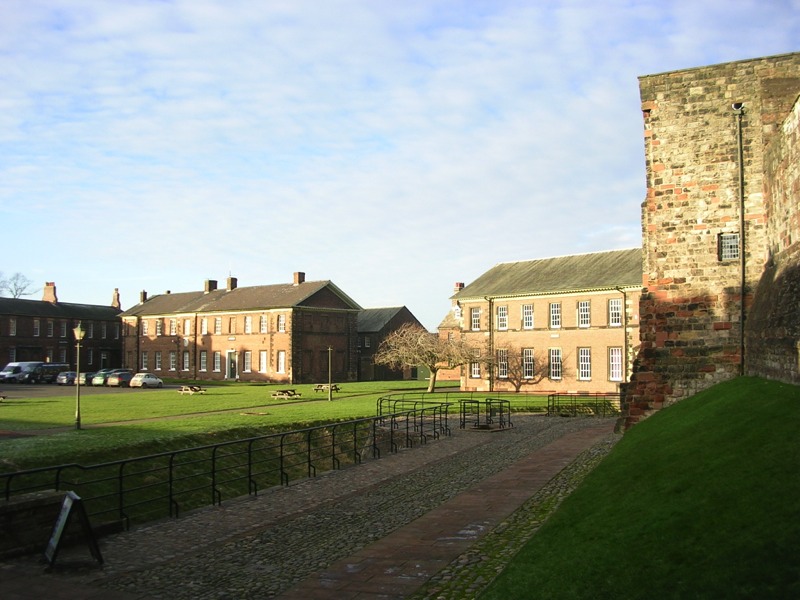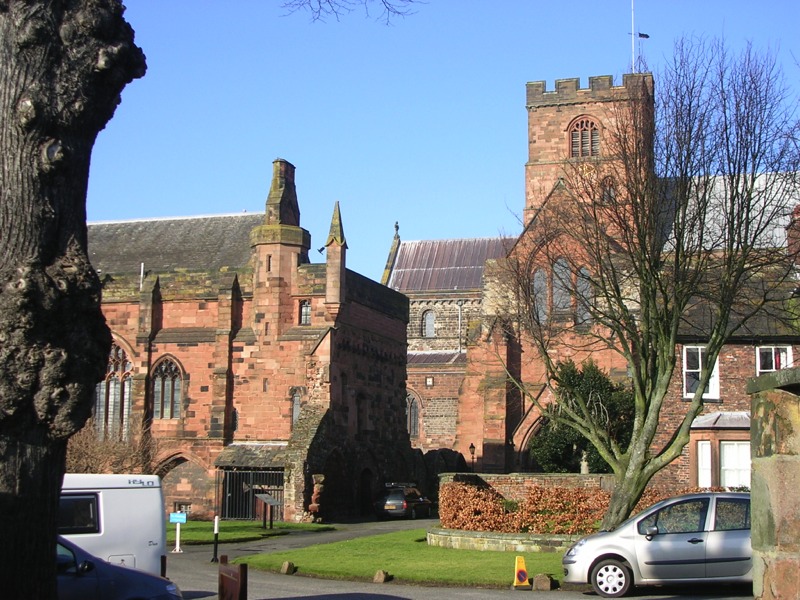Carlisle
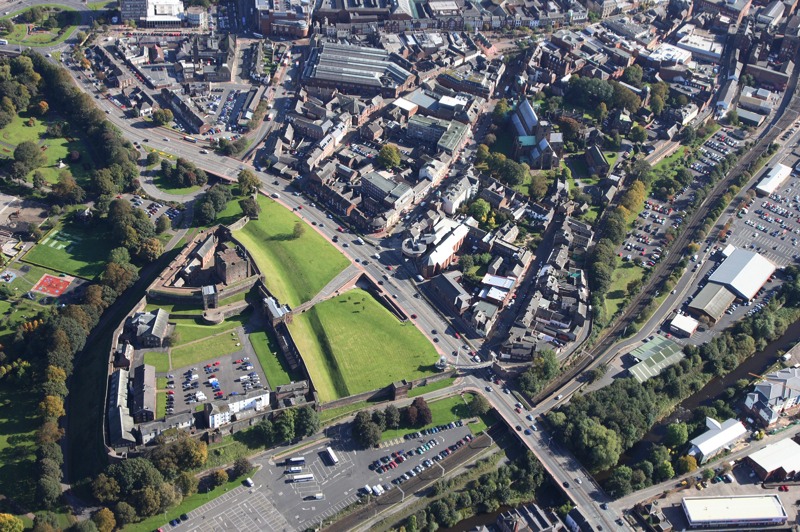
Welcome to Carlisle, Cumbria’s 2000 year old Great Border City!
Since its beginnings as a Roman fort in the year 72AD, Carlisle has been filled with conflict and its past reads like a roll call of history. Following the arrival of Emperor Hadrian, Carlisle was turned into a thriving town as he set about the construction of Hadrian’s Wall, an 80 mile long stone wall, built to keep out the ‘barbarians from the north’.
Other famous historical figures that have shaped the city’s history include the mystical figure of King Arthur, who was the reputed ruler of early ‘Caer Luel’, the unfortunate Mary Queen of Scots, who was imprisoned in Carlisle Castle, the gallant Bonnie Prince Charlie, leader of the Jacobite rebellions, Sir Walter Scott, who was married in Carlisle Cathedral and the infamous Macbeth, ruler of the city when it was under Scottish control. All have played an important role in shaping the cosmopolitan city that is Carlisle today.
Since its beginnings as a Roman fort in the year 72AD, Carlisle has been filled with conflict and its past reads like a roll call of history. Following the arrival of Emperor Hadrian, Carlisle was turned into a thriving town as he set about the construction of Hadrian’s Wall, an 80 mile long stone wall, built to keep out the ‘barbarians from the north’.
Other famous historical figures that have shaped the city’s history include the mystical figure of King Arthur, who was the reputed ruler of early ‘Caer Luel’, the unfortunate Mary Queen of Scots, who was imprisoned in Carlisle Castle, the gallant Bonnie Prince Charlie, leader of the Jacobite rebellions, Sir Walter Scott, who was married in Carlisle Cathedral and the infamous Macbeth, ruler of the city when it was under Scottish control. All have played an important role in shaping the cosmopolitan city that is Carlisle today.
Click on image below for slideshow of Carlisle (Courtesy of Carlisle City Council)
Official tourism site for Carlisle: http://www.discovercarlisle.co.uk/
Carlisle Cathedral
Founded in 1122 as the Priory of St. Mary’s, it became a Cathedral on the formation of the Diocese of Carlisle in 1133. Although battered by centuries of warfare, it was built for the glory of God, and services have been said and sung daily in it for nearly 900 years. Items of special interest include the east window, with its tracery containing some very fine 14th century stained glass, the Brougham Triptych, a magnificent 16th century carved Flemish altarpiece in St. Wilfrid’s Chapel, exquisite medieval wall paintings, a magnificent renovated 14th century barrel vaulted painted ceiling in the choir and detailed carving of the early 15th century choir stalls and misericord.
Carlisle Castle
The original castle was built in wood in 1092 by William ll, and later rebuilt in stone by Henry l in 1122. Within the castle walls visitors can still see carvings etched in the cell’s stone walls by prisoners of Richard, Duke of Gloucester, who later became Richard lll. However, the most famous of all prisoners to be confined to the castle was Mary, Queen of Scots, who was imprisoned here after she abdicated the Scottish throne in 1568.
Founded in 1122 as the Priory of St. Mary’s, it became a Cathedral on the formation of the Diocese of Carlisle in 1133. Although battered by centuries of warfare, it was built for the glory of God, and services have been said and sung daily in it for nearly 900 years. Items of special interest include the east window, with its tracery containing some very fine 14th century stained glass, the Brougham Triptych, a magnificent 16th century carved Flemish altarpiece in St. Wilfrid’s Chapel, exquisite medieval wall paintings, a magnificent renovated 14th century barrel vaulted painted ceiling in the choir and detailed carving of the early 15th century choir stalls and misericord.
Carlisle Castle
The original castle was built in wood in 1092 by William ll, and later rebuilt in stone by Henry l in 1122. Within the castle walls visitors can still see carvings etched in the cell’s stone walls by prisoners of Richard, Duke of Gloucester, who later became Richard lll. However, the most famous of all prisoners to be confined to the castle was Mary, Queen of Scots, who was imprisoned here after she abdicated the Scottish throne in 1568.
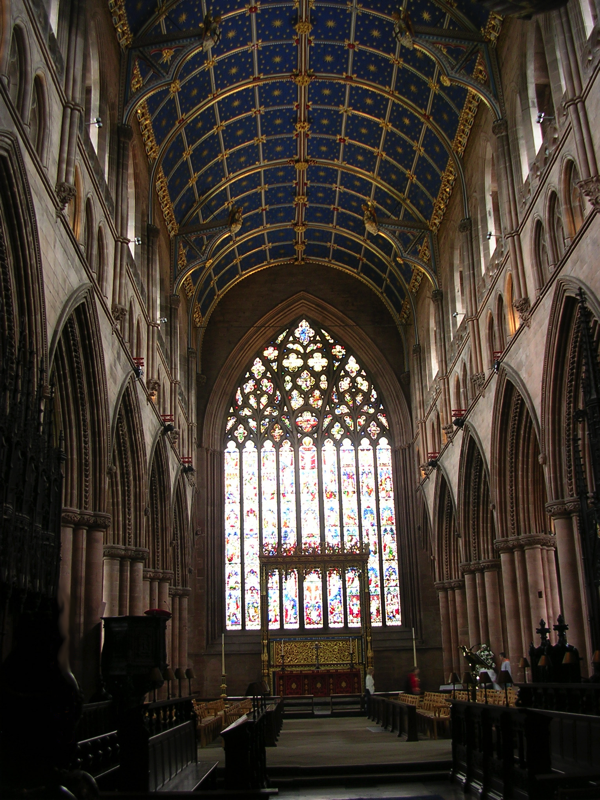
Bonnie Prince Charlie captured the castle in 1745 with his Jacobite troops, but they were forced to surrender when they were unable to maintain the strength of their invasion, and the castle became their prison. In the dungeons, visitors can view the ‘Licking Stones’ which parched Jacobite prisoners desperately used to gain moisture to stay alive.
The Guildhall Museum
The medieval half-timbered Guildhall is one of Carlisle’s treasures, dating back to 1407. There were eight separate guilds in Carlisle (Merchants, Skinners, Tanners, Butchers, Shoemakers, Smiths, Tailors and Weavers) and each guild had a separate meeting room, each with its own character and displays relating to the history of the city and the guild.
Amongst the museum’s exhibits are the stocks used for punishing criminals, the chest in which the city’s valuables were kept during the Middle Ages and two bells from the Elizabethan period that were awarded as prizes for horse racing, a custom that continues to this day.
In front of the Guildhall is the Greenmarket where vegetables were sold on market days, whilst meat and fish were traded in the market place, grain in English Street and potatoes in Castle Street.
The Old Town Hall
Dating from 1669, this replaced a medieval Moot Hall on the same site. The Grade l listed building is currently undergoing essential repair and maintenance work but normally houses the city’s award winning Tourist Information Centre. The 17th century Market Cross stands outside the building and marks the junction of where the A6 from London meets the A7 from Edinburgh. Nearby is a replica of England’s first pillar box which had originally stood in Botchergate.
The Tithe Barn
Here the tithes, one tenth of every farmer’s crop, were stored for the Priory of St. Mary’s. Tithes and other goods were often brought in through the Sally Port, a secret gateway, to avoid paying city tolls.
The West Walls and Citadel
Most of Carlisle’s west walls, which would have linked the twin drum towers of the Citadel to the Castle, remain intact despite centuries of attack, and give a good impression of how the city would have looked in medieval times.
The Citadel’s towers were first built in 1541 to improve the city’s defences, and it was here that tolls were collected for goods entering and leaving the city. Now the West Tower houses the County Court and prisoners’ cells which can still be seen today.
Tullie House Museum
The Jacobean part of Tullie House was built in 1689 replacing a medieval building. This was extended in 1893 and more recently in the 1980’s and lastly in 2000 when a new underground gallery was constructed together with a new underpass to improve the link between the city and the castle. The work revealed key elements of the Roman fort, and the remains of an earlier Saxon fortress.
St. Cuthbert’s Church
The current church is unusually aligned along an old Roman Road rather than in an east-west direction, and dates back to 1778. It also features an unusual moveable pulpit mounted on rails.
Text and pictures courtesy Carlisle City Council
The Guildhall Museum
The medieval half-timbered Guildhall is one of Carlisle’s treasures, dating back to 1407. There were eight separate guilds in Carlisle (Merchants, Skinners, Tanners, Butchers, Shoemakers, Smiths, Tailors and Weavers) and each guild had a separate meeting room, each with its own character and displays relating to the history of the city and the guild.
Amongst the museum’s exhibits are the stocks used for punishing criminals, the chest in which the city’s valuables were kept during the Middle Ages and two bells from the Elizabethan period that were awarded as prizes for horse racing, a custom that continues to this day.
In front of the Guildhall is the Greenmarket where vegetables were sold on market days, whilst meat and fish were traded in the market place, grain in English Street and potatoes in Castle Street.
The Old Town Hall
Dating from 1669, this replaced a medieval Moot Hall on the same site. The Grade l listed building is currently undergoing essential repair and maintenance work but normally houses the city’s award winning Tourist Information Centre. The 17th century Market Cross stands outside the building and marks the junction of where the A6 from London meets the A7 from Edinburgh. Nearby is a replica of England’s first pillar box which had originally stood in Botchergate.
The Tithe Barn
Here the tithes, one tenth of every farmer’s crop, were stored for the Priory of St. Mary’s. Tithes and other goods were often brought in through the Sally Port, a secret gateway, to avoid paying city tolls.
The West Walls and Citadel
Most of Carlisle’s west walls, which would have linked the twin drum towers of the Citadel to the Castle, remain intact despite centuries of attack, and give a good impression of how the city would have looked in medieval times.
The Citadel’s towers were first built in 1541 to improve the city’s defences, and it was here that tolls were collected for goods entering and leaving the city. Now the West Tower houses the County Court and prisoners’ cells which can still be seen today.
Tullie House Museum
The Jacobean part of Tullie House was built in 1689 replacing a medieval building. This was extended in 1893 and more recently in the 1980’s and lastly in 2000 when a new underground gallery was constructed together with a new underpass to improve the link between the city and the castle. The work revealed key elements of the Roman fort, and the remains of an earlier Saxon fortress.
St. Cuthbert’s Church
The current church is unusually aligned along an old Roman Road rather than in an east-west direction, and dates back to 1778. It also features an unusual moveable pulpit mounted on rails.
Text and pictures courtesy Carlisle City Council

